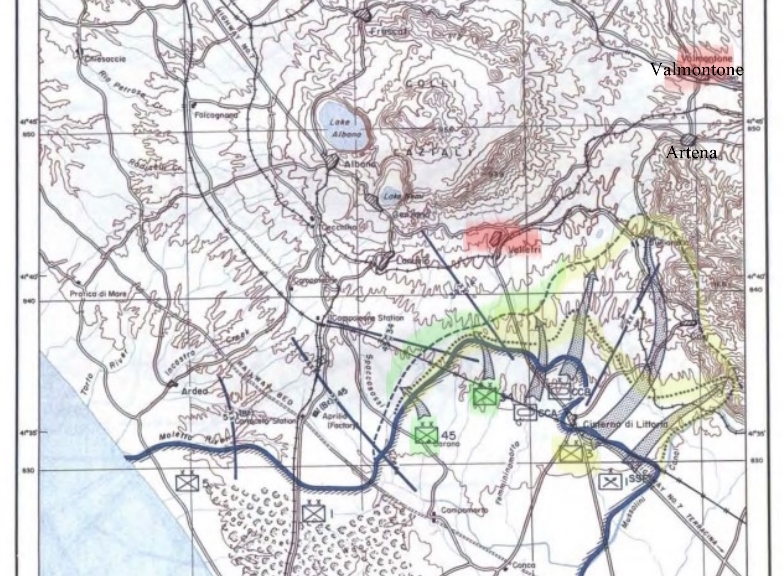B writes:
Can you tell me where John Francis Enright could have been killed in action?
Hi B,
It took a little time but I was able to find the information about John Francis Enright that you requested. Much of this information is from the collected historical documents provided to the public by armed-guard.com.
They do a good job of showing their sources although their formatting is a little difficult to read. I would still encourage you to read through the details they provide to get a clearer picture.
John Francis Enright was aboard the SS Arthur Middleton which left from New York to Oran in Northern Africa on December 12, 1942.
As the convoy was forming up just outside of their destination near Casablanca on January 1, 1943 (1411 GMT) the SS Arthur Middleton was torpedoed by a U-73 (Deckert) German U-boat.

The U-73 (Deckert) would eventually be sunk almost 12 months later by the USS Woolsely and USS Trippe on December 16, 1943.
Of the 81 crewmen on board only 3 survived.
John Enright was amongst those in the crew whose bodies were not recovered. He is now memorialized on the Tablets of the Missing by the American Battle Monuments Commission (ABMC) in the North Africa American Cemetery and Memorial in Tunisia. You can print a memorial certificate at no cost from the ABMC.
To really get a full handle on what happened that day here is the full excerpt from a firsthand account from surviving shipmate Quinten S. Lederman:
The S.S. Arthur Middleton sailed from New York on December 12, 1942 in a
convoy consisting of 44 vessels and 7 U. S. destroyers. We had a full cargo
of general war supplies. I know that in # 4 hatch there were bombs and
torpedoes. On the fore deck were U. S. Army trucks and on the after deck was
a large navy barge.The convoy’s speed was about 9 knots. We were #21.in the convoy. This convoy
was in 11 columns, 4 deep. The S S Arthur Middleton was the first ship in
the first column from the port side. When we left New York, I did not know
our destination but, after we had been sailing for about two weeks, I
learned that we were going to North Africa.The voyage was uneventful until we were about two days from Gibralter, when
one of the Destroyers in our convoy hoisted a danger signal that there were
submarines in the vicinity. A Number of depth charges were dropped.About December 30, 1942, after the convoy had split up, 11 ships, including
The S.S. Arthur Middleton, passed through Gibralter on the way to Oran. We
were escorted by 7 destroyers. 4 of these destroyers were British, which had
joined us just before we reached the Straits of Gibralter.I should judge it was about 1:30 P.M.on: January 1, 1943, when the convoy
slowed down to 5 knots and reformed in order to enter into the harbor of
Oran. I was told when this occurred we were about 9 miles off shore.About 1:45 P.M. I left the messroom and stood in the doorway, aft, starboard
side. My quarters were just inside the doorway. I recollect now that, at
this time, the S.S. Samuel Chase was about a ship’s length off our stern
port side. We were still cruising at about 5 knots. I also recollect that
the S.S. Arthur Middleton was travelling parallel to the shore in an
easterly direction as our starboard side was broadside to the coast. I also
recollect thatthere were two British destroyers on our port hand about 1/4
mile away and abreast of us. To the best of my knowledge, the position of
the shore and these other vessels just mentioned were about the same when a
terrific explosion occurred at 2:11 P.M. I know it was 2:11 because when I
was on a raft I saw that my watch crystal was broken and the hands pointed
to 2:11. I firmly believe that the explosion occurred forward of the bridge
although I did not actually see any flames or any parts of the ship blown in
the air.Psge 2. Statement Quinten S. Lederman, Seaman first class, S.S. Arthur
MiddletonThe concussion tossed me between the two bulkheads in the alleyway and,
within a few seconds, my senses returned and I stepped into my quarters to
secure a my life jacket. It was not there. I immediately stepped out on deck
and, looking forward, saw that the whole fore part of the vessel, as far aft
at #5 hatch, had submerged. In fact, only the poop deck was above water. I
went toward the rail, which was already under water, and just managed to get
clear just as the stern disappeared under the surface. I should judge, the
S.S. Arthur Middleton sank within a minute after the explosion. The weather
at the time was fine. There was practically no wind and the sea was smooth.
I managed to hang on to a barrel floating nearby and from this barrel, I
sighted one of the doughnut rafts about 100 ft. away. I swam to the doughnut
raft and, shortly afterward, two other of the gun crew, namely Jankowski,
First Class Seaman, and Andy Petrowski, First Class Seaman, joined me. I was
on this doughnut raft with the other twomen for about 1/2 hour.Near where the S.S. Arthur Middleton went down the sea was covered with fuel
oil and wreckage. Close-by was the navy barge, which had been on the after
deck. The rest of the convoy had gone ahead and were about a mile to the
eastward. However, there were two British destroyers closeby. One was
zigzagging but I do not believe dropped any depth charges. The other
destroyer, which had been off our stern, port side, lowered a boat and came
over to the doughnut raft. I and the two other navy gunners were taken in
the small boat and placed aboard the British destroyer.While I was on the doughnut raft, it would be quite eagy for me to see if
there were any survivors from the S.S. Arthur Middleton. I could see no-one
in the water and there were no other rafts or lifeboats in sight. The three
of us were injured and when we got into Oran, we were placed on board a
British hospital ship. About the third day after being on the hospital ship,
some U. S. navy officers came aboard and questioned me at length in regard
to the explosion and sinking of the S.S. Arthur Middleton. I told them I did
not know what had occurred. All I had heard was the explosion, which I
believe had happened forward. From the hospital ship, the three of us were
transferred to a navy hospital ashore. Before being returned home, I was
questioned at length by the Secretary of the U. S. Admiral in charge at
Oran. I told him the same story that I had told the naval authorities
previously.On January 31, 1943, I and AndyPetrowski left Oran to be sent home. The
other man Jankowski, is still in the hospital. Up to the time that I left
Oran, to the best of my knowledge, nothing had been heard of any of the crew
of the S.S. Arthur Middleton. I believe all of them were drown or.killed
when the explosion occurred and the S.S. Arthur Middleton went down.
I hope that fills in some of the missing details you hoped to find.
My Condolences,
-Specialist Carroll-











